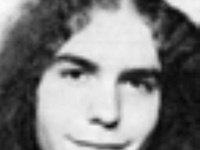Crist viewed the new project as an alternative to the Daily Racing Form, which he saw as a mouthpiece for the industry. After Maxwell’s publishing empire collapsed with his death, however, the Racing Times was bought out by the Form.
Crist spent the next two years as an “unemployed horseplayer”—passing $1 million “through the windows” and spending hours each day studying the statistics in preparation for the next day’s races.
“It’s a very tough way to make a living,” he says. “There’s no lazy man’s way to riches in horse racing. It’s like Wall Street or any other 14-hour-a-day job with a lot of numbers. Betting is much better as a hobby than as a way to support yourself.”
Eventually, he earned an appointment to NYRA, and he found himself on the other side of the counter. The lifelong customer of horse racing now helped to run the industry as vice president of communications and development.
NYRA was lagging behind on a technology called simulcasting which was changing the face of the racing industry.
Simulcasting allows a race at one track to be seen over television sets at other tracks across the country. Bettors at these satellite locations can wager on horses at the home track, which means money flows into NYRA races even if the bettors aren’t in New York.
More simulcasting meant more money, so Crist negotiated deals with many tracks to start carrying simulcasts of NYRA’s races. In 1994, the total amount bet on NYRA races—or the “handle” in racing parlance—was $205 million. The next year, it was $589 million.
“Steve got it,” says Bill Nader, a NYRA senior vice-president who served as director of simulcasting and television under Crist, “and he got it not because he went to Harvard, not because he’s a highly intelligent guy, but because he had great business sense in thoroughbred racing.”
True to the Form
The Daily Racing Form has been around since 1894. Beside its red logo, the paper proclaims itself “America’s Turf Authority.”
Crist never liked the Form. As a bettor, he spent hours supplementing its statistics on horses’ past performance as he handicapped the next day’s races. As a journalist, he thought its coverage was shallow and its reporters were cheerleaders for the racing industry.
But several months after he left NYRA, frustrated by the lack of change in the heavily-regulated world of horse racing, the legendary paper was put up for sale.
Crist assembled a group of investors and bought it for about $40 million.
That put the lifelong racing devotee in charge of what he considers a “classic American brand”—the name in horse racing second in recognition only to the Kentucky Derby.
Taking over the Form has made him “a steward and a caretaker” of the racing tradition, he says. “It’s been a great goal to have a good, honest, sophisticated, accurate publication for people who love the game.”
Read more in News
Pataki: 'Yale is Going to Crush Harvard'













